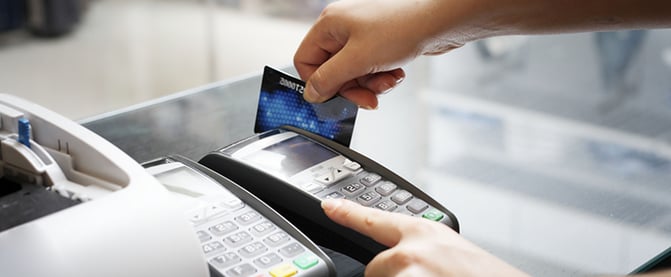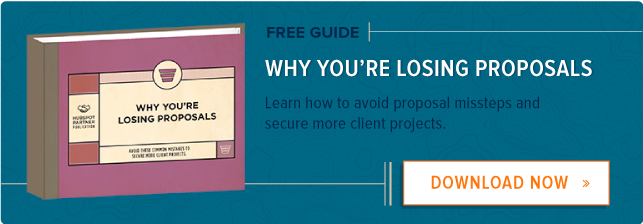How To Create A Proposal Document
I think we all can admit that the proposal process is broken. Besides the fact that proposals are costly to the agency, time-consuming, and typically result in low close rates, they are also a terrible way to start a relationship. The agency doesn't have enough information in the very beginning of the relationship to understand the core business issue and whether or not it can be addressed through marketing. And the client doesn't know how the agency works and what will be expected of his team. Yet, we ignore this information and instead dive into creating a "strategic" document. Michael James, a former software architect who teaches Agile and scrum methodologies, said: "We rarely have perfect knowledge at the beginning. In fact, we know less about our project when we are starting out then we're ever going to know in the future. Today is the dumbest day of the rest of our project." Due to this and the high cost of the proposal process, Boyle Public Affairs has implemented a pay-for-proposal structure. The agency will sign on a client for an initial 30-day engagement -- using HubSpot's free trial -- at a significantly reduced fee. At the end of the month, the team will present an in-depth, researched, and collaborative proposal. By starting the relationship with a monetary exchange, the client's view of the agency is completely different. "With a little skin in the game, the client acknowledges that our time represents our experience, knowledge, and ideas, and they're willing to pay for this," said Kellie Boyle, co-founder and partner at Boyle Public Affairs. "Those are the kind of clients we want." But requiring a payment for a proposal isn't just about the agency avoiding the cost of winning new business. It's also about making sure the agency and its services are a good fit for the client. "We tell prospects that this is a major investment for them, and it shouldn't be based on how charming we are as business development people or what kind of educated guesses we make in our proposal," Boyle said. "That shouldn't be the basis for a successful, long-term relationship." The pay-for-proposal model has a few other benefits, including: Boyle has too often found herself sitting through multiple two-hour lunches and offering insights and ideas over numerous phone calls to only have the client decide that they don't think now is a good time to hire an agency. Sometimes, clients figure out in the course of these meetings that they don't have the budget. Some clients they determine that what they really need is to hire someone in-house to implement the ideas the agency suggested. Othertimes, these clients are just "looking," and they are more than happy to soak up free advice given over lunch or in a proposal. "Can you imagine a lawyer or even an interior decorator giving away hours of expertise and counsel in the hope that the client might one day decide to pay for it?" said Boyle. Many proposals are set up so that each deliverable is marked with a price tag. This brings up images of auto repair bills in my mind: What can I cut? What's unnecessary? I don't even understand what this "activity" is, so why does it cost so much? If you simply offer a menu of services, you don't distinguish your team as strategic experts. A person's perception of the value, quality, and demand of a product or service is often influenced by not only what the actual price is but also how it is presented, so if you start by giving away your ideas for free, the client can hardly be expected to place a high value on your work. As soon as you hear the phrase "send me a proposal," your agency grabs a group of people and begins brainstorming, writing, and pulling together materials for the proposal. To send it back to the client as quickly as possible, you might reuse generic information from previous proposals and risk either offering no useful specifics or missing the mark altogether. This almost guarantees your proposal will be rejected. Properly qualifying prospects during the sales process will ensure that you are spending your time nurturing and converting the right prospects (clients who fit your ideal profile) and adding new accounts that will become profitable for the agency. Part of this is figuring out which clients are invested in inbound marketing and committed to the time it will take to increase traffic and generate leads -- it doesn't happen overnight. If clients are willing to pay for a 30-day engagement, are involved and available during this time, and are truly excited about the future opportunities, that signals this could be a long-lasting, collaborative relationship. In addition, it shows the client that these are the type of partnerships your agency is looking for. You want to work with companies who respect the time and thought you put into creating a plan to reach the client's goals. The idea of paying for a proposal can be a surprise to some clients -- and it's just not a good fit for others, depending on what services they are in need of. Boyle said this type of approach usually works with clients who haven't created a detailed RFP and are not interested in or required to run a competitive search process. It also works for companies that are wary of making a year-long commitment to an agency. They are unsure of what internal resources they can commit to a new type of marketing activity, the ROI of the engagement, and the logistics. The trial retainer helps clients gain confidence that this is the right path forward, and it builds trust in the chosen partner agency from the beginning. One selling point Boyle points to in conversations with prospects is the fact that at the end of the month, the agency outlines a realistic and achievable path forward. Sometimes, this means that certain projects or services both sides once thought were necessary are now seen as as unnecessary or of lower priority for the company's marketing and sales success. The price of the proposed retainer may actually decrease because of this changed perspective of what the client really needs. "The trial period enables us to draft a long-term retainer proposal that not only more accurately reflects the reality of their situation, but because of the 30 days of collaboration, it ensures a higher level of buy-in among the key decision-makers," said Boyle. A trial retainer should -- if anything -- put more pressure on the agency. While you are getting paid, it is also a sort of test of your firm. Your client service, project management, communication, and delivery need to be flawless. The deliverables you perform during that month should provide value to the client, whether they choose to work with your agency or not, and they should include activities that give your firm a better understanding of the client's current marketing strategies, target market, and untapped opportunities. You'll need this information for the final presentation. During the first month, you could: During the month, you should have numerous meetings with the client to understand their needs and resources and to educate them on your process and the benefits of digital and inbound marketing. And at the end of the month, your agency does a formal presentation on what the team learned in the past 30 days and what the agency's recommendations for the client are moving forward. There's no throwing a proposal over a wall and waiting and wishing to hear back. Boyle says that the agency is typically able to get more done in the first month than they are able to in the first three months of a typical engagement. "When the client knows there's a 30-day clock ticking and they're paying for it, they're great about setting up meetings and giving us access and information," Boyle said. "When we know there's a 30-day clock ticking and we have to impress them, a lot happens." In the end, the goals for the client are identified and based in reality. It's not about making an educated guess or repeating what the client thinks the brand should want to achieve. "The pay for proposal approach is a way to establish a partnership that's based on hope," Boyle said. "Both parties are hoping that it'll work out, as opposed to the current proposal approach where both sides operate with an underlying level of cynicism. It's a win-win for both parties that I hope everyone in our industry will embrace." 
Why You Should Get Paid for Proposals
Avoid clients with unrealistic budgets.
Change the idea that you are a commodity.
Spend the time crafting a thoughtful and impactful plan.
Establish the type of relationships you are looking for.
Implementing a Pay for Proposal Structure

Originally published Aug 17, 2015 9:00:00 AM, updated February 01 2017
How To Create A Proposal Document
Source: https://blog.hubspot.com/agency/paid-proposals
Posted by: williamsindesur71.blogspot.com

0 Response to "How To Create A Proposal Document"
Post a Comment